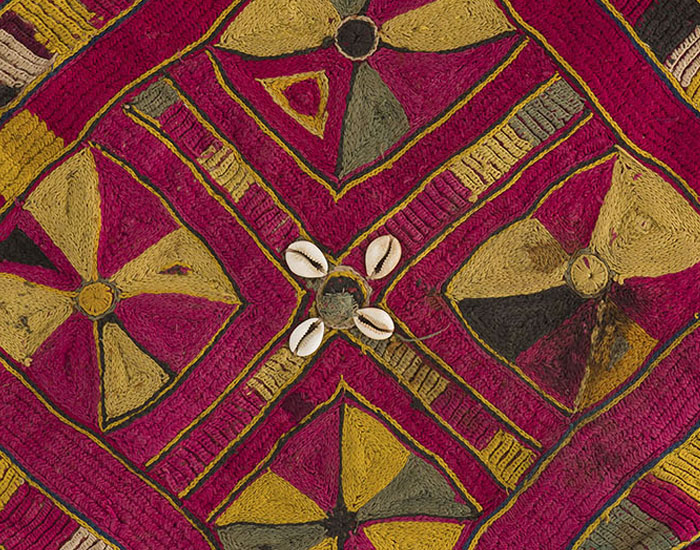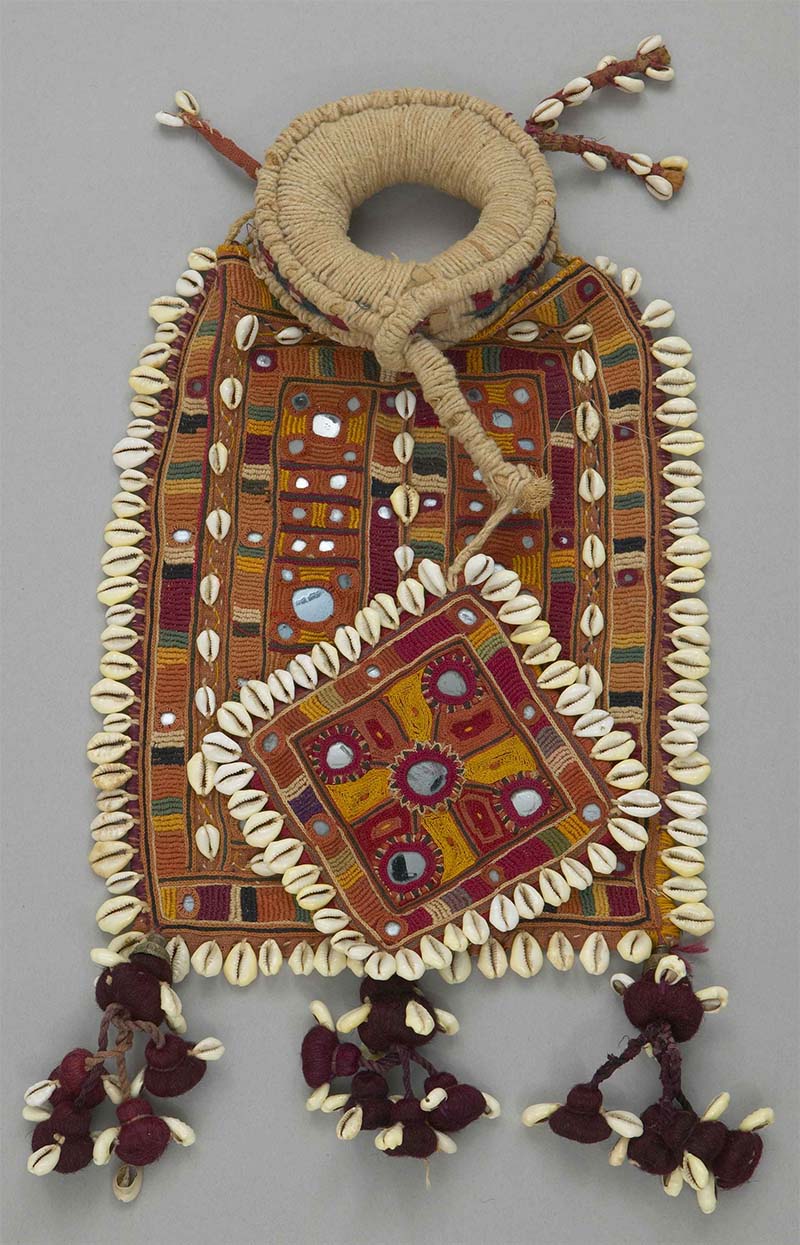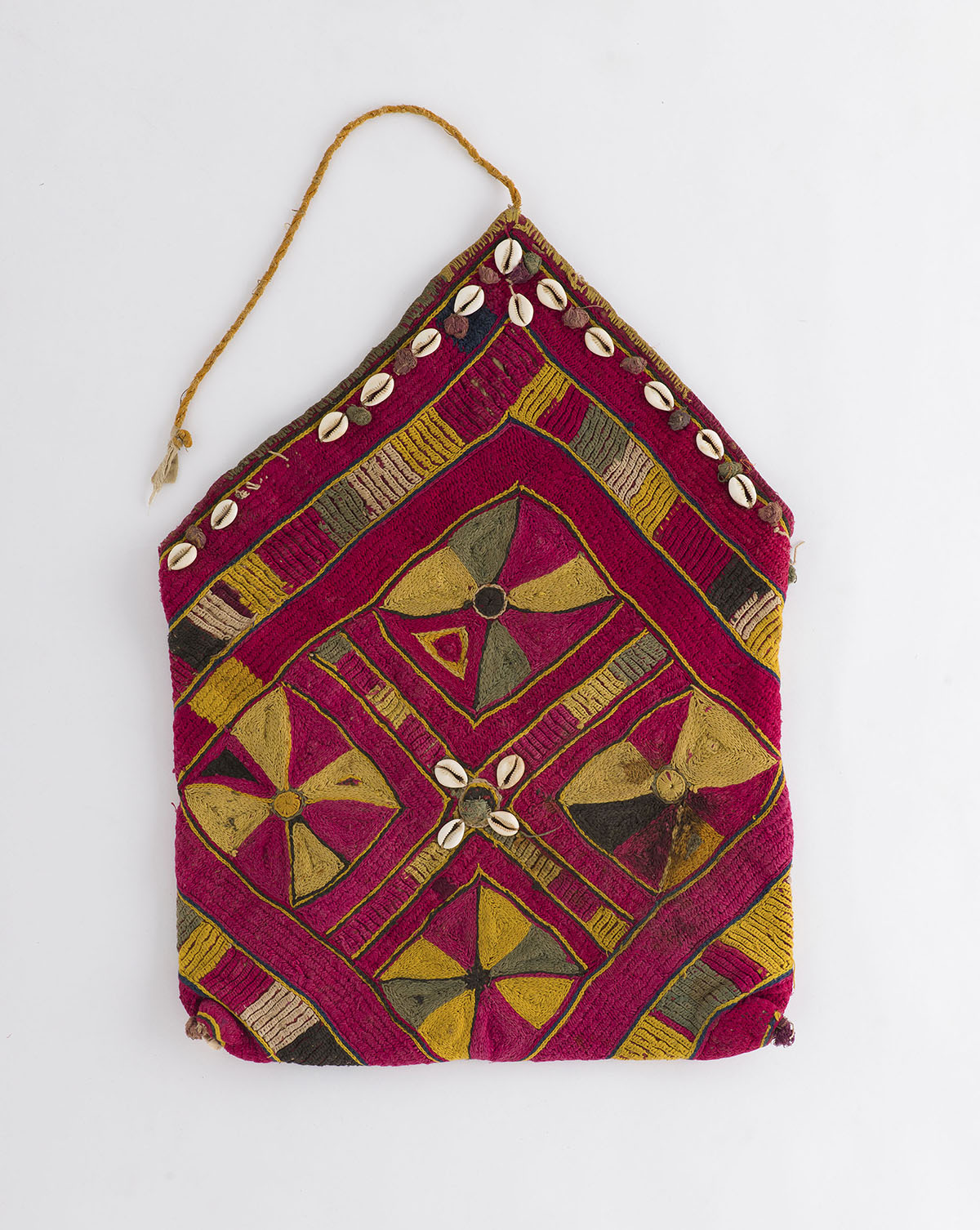
Traditionally practised by the Banjaras (also known as Lambanis or Lambadis), a semi-nomadic community primarily residing in parts of central, western and southern India, primarily Rajasthan, Andhra Pradesh, Telangana, and Karnataka, banjara embroidery is characterised by vibrant colours and geometric stitches, embellished by a variety of visually distinct materials such as bells, beads, cowries, shisha, metal bits, coins and tassels are integrated into the embroidery patterns, often covering the entirety of the base fabric, which is typically red-dyed cotton.
Traditionally, this technique of embroidery was practised solely by women, who often work together and are trained by more experienced practitioners in the community. They embroider freehand, causing the stitched lines to appear slightly wavy rather than rigid and straight. A range of stitches is used traditionally classified into fourteen types, including running stitches, which are used to create simple patchwork designs on the chatta; chain stitches; herringbone stitches; bargello stitches; and smock stitches. Often, strips of kangura are applied to line the borders of the embroidered fabric using the appliqué technique. Shishas appear frequently and are used for their reflectiveness, while materials such as ivory and gold are used to lend greater commercial value to the fabric. Additional materials, such as cowrie shells and coins, are also incorporated to lend symbolic value to the work.
Banjara embroidery is traditionally used in clothing and accessories that aid the community’s way of life, such as bags, pouches and headdresses with circular pieces that allow women to carry pots of water on their heads. While settled and working partly in agriculture since the nineteenth century, the Banjara continue to practise their craft, both for personal as well as commercial use. The latter has resulted in the production of a vast range of items featuring embroidery, including bedsheets, cushion covers, wall hangings and other goods. This has been facilitated through various government initiatives and independent organisations, including the Sandur Kushala Kala Kendra (SKKK), which works with indigenous weaving communities including Lambani women to help them build self-help groups based out of Sandur, Karnataka.
First Published: April 21, 2022
Last Updated: July 26, 2023



